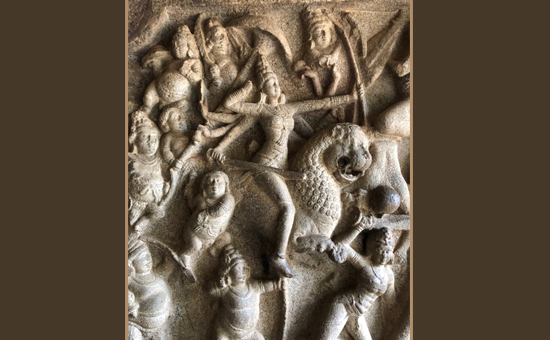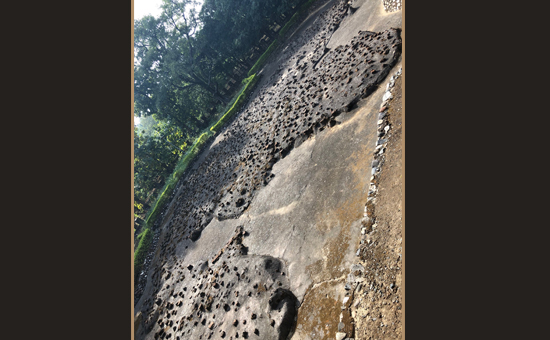- The author shares ideas on what India must do to promote its heritage. This would help India earn large sums of money in tourism receipts like the U.S., Spain and France.
Here’s a paradox: India has the greatest architecture in the world, extraordinary sculpture, great music
and art, unique spirituality and unparalleled natural beauty, but
it is hardly on the world-map for tourism and culture. The four largest
countries in tourism receipts are US at $214 billion, Spain at $74 billion,
France at $67 billion, and Thailand is $63 billion. India is not in the top ten
and makes a paltry $29 billion.
Indeed, the tourism revenue of City States of Hong Kong and Singapore is
comparable to that of India: Hong Kong is much higher at $37 billion and
Singapore is just below at $21 billion.
Letting people know of India’s monuments of amaranthine beauty has important implications for policy. In the post-industrial society where manufacturing and office work is done by robots and machines, most new opportunities will be in the areas of traditional arts. The relentless and inevitable loss
of jobs caused by automation must be countered by increasing opportunities in
the area of culture and heritage tourism. The culture sector must leverage
technology both for marketing and for preservation and enhancement of its
offerings. It must also use creative design, which requires a new approach to
higher education.
In engineering itself, most value addition will be in design and the
quality of human-machine interface. To get into heritage tourism in a
competitive manner, India needs more colleges devoted to the arts and design and its own classics. Indians need to know their own world
famous tradition of art and architecture.
The mother art is architecture. Without an architecture of our own we
have no soul of our own civilization. - Frank Lloyd Wright
The energy that drives beauty is the breath of the Spirit. It allows one
to see in the moment a movement that stretches time to eternity.
Aesthetics and Management
What are the main reasons behind India’s failure to market its cultural products and monuments? Poor infrastructure is generally mentioned as responsible for the reluctance of foreigners to come and visit India. But what do we mean by the phrase “poor infrastructure”? Indian cities have excellent connectivity by air and a recent issue of Travel and Leisure Magazine listed several Indian properties amongst the world’s top 100 hotels, including one at Number 1. It is true that road transportation within Indian cities is chaotic and stressful [1], but that could not be the entire story.
We are failing at marketing Indian monuments and cultural destinations [2]. Indians themselves are increasingly choosing to visit countries outside rather than explore the wonders that lie within India’s borders. What hurts India is the lack of aesthetics in the way the monuments are managed and the marketing is done.
 Durga Mahisasuramardini Mahabalipuram.
Durga Mahisasuramardini Mahabalipuram.
In my assessment, the administrative regime that takes care of monuments has failed. My friends in ASI tell me that the agency has been tasked to do too many different things with the result it doesn’t do any of those tasks well. Perhaps what we need is a separate agency to manage the monuments.
Last
month I travelled through many cities of India and was shocked by what I saw.
The
1400-year old Durgā Mahiśāsuramardini rock-wall sculpture at Mahabalipuram, one of the greatest in the history of world art,
is not even protected. Any visitor can touch it (and even damage it). If France
had it, they would market it just as they have marketed Mona Lisa.
At the
Sarnath Museum the entry for foreigners and locals alike is Rs 5; it is not
even worth the trouble of collecting the money. There is also much justified
discontent at the Museum for the ban on carrying mobile phones, even though
cameras are allowed.
 The cemented altar at Kalsi, Uttarakhand.
The cemented altar at Kalsi, Uttarakhand.
In Kalsi, in Uttarakhand, I discovered
that the great 1800-year old Aśvamedha rite performed on an Agnicayana altar has been
cemented over, which amounts to a wanton destruction of heritage. Contrast this
with how Dutch archaeologists and art experts painstakingly re-erected the
collapsed towers of the great Prambanan Temple in Java.
From Excellence to
Immobility
The English during their colonial rule were responsible for spreading the notion that Indians were careless workers, which is contradicted by India’s great monuments and its arts that focus on perfection. Indians were not only careful workers, their productions touched upon perennial themes relating to deep notions concerning recursion, change, equivalence, and transcendence. If we
analyze the historical relation between architecture and cosmology we see a
continuity across time and relevance for the contemporary drive to reconnect
with Nature. New materials and technology and the needs of modern urban
environments facilitate return to these themes, but they also create new
challenges.
But it
is true that modern India has generally lagged behind in devotion to
excellence.
To understand this we must remember that the British destroyed India’s economy by crushing taxation and preventing investments in India just as the industrial revolution took off in Europe. India rapidly became deindustrialized and turned into a destination for British goods. This was great for the Empire but a disaster for India.
The horror of that period may be guessed from the estimate that India’s share of the world economy fell from 20% to about 1.4% during the British rule (the estimate is for 1750 -1914). During this period, as the collective memory of good times was erased, people got used to depending on handouts and society lost its vitality.
India’s own artistic ideas were pushed aside further after Independence as functionalism became popular in response to the need for mass housing and cheap office buildings. But questions of aesthetics and harmony with Nature are once again coming to the due to material progress, the demand for harmonious living, and the need to improve urban places so as to make them a more attractive destination for heritage tourism.
But bad
colonial ideas continue to dominate public discourse in India. It is like a
spell and there is a word in Sanskrit for it: nāga-pāśa,
which means tying up and immobilizing a person (or a nation). It is the
powerful weapon that Indrajit uses in the battle in the Rāmāyaṇa. Indeed, the nāga-pāśa is in many ways even worse than the
all-annihilating Brahmāstra for its damage is subtle and insidious. Its meaning
becomes clear when you realize that the word nāga not only means “snake” but also “rock”.
The
brothers Rāma and Lakṣmaṇa are protected from this immobilization by the
exertions of the eagle-eyed Garuḍa. As we know, Indrajit later uses a tactical
weapon called Vāsavi वासवि
Śakti to hit Lakṣmaṇa who then needs the Sanjīvani herb to revive him. India seems to be waking up from the centuries old nāga-pāśa but now her enemies are using
tactical weapons to defeat her.
Culture and
Classics
Whatever
the British institutionalized wasted under the withering direction of the
bureaucracy. Only music, yoga, the traditional arts and crafts and spirituality
that the British left alone has maintained its vitality but, fortunately, this
is where most growth will take place.
India should draw up an ambitious master plan to be one of the world’s top destinations both for internal and foreign tourism. But this cannot be done by the current dispensation of the ASI. We need a commission to draw up a plan for future action and consideration of new initiatives and, of course, much greater funding support from the government.
It would help if India had its own list of Indian National Heritage (INH) sites that goes beyond UNESCO’s list, and a new agency was created to manage these sites. The management and marketing of the INH sites will then become a model for other outstanding sites.
Good management of monuments is just one component of support for
culture that must include classics-based education to train the youth to
recognize beauty and encourage creative expression. When we recognize beauty,
we carry it in our hearts, and we learn to find it in unexpected places
bringing us joy and fulfillment.
Notes
1. Managing traffic should be given high priority. The barricades that
appear suddenly without warning are dangerous and should be removed. And I
think it is wrong to believe that letting dogs and cows roam freely on the
streets implies a compassionate society.
2. For example, not many people have seen
the Kailāśa Temple at
Ellora, the world’s greatest sculptured temple, that was hewn out of a single rock with the sculptures all at the right places and to the correct proportions. There are dozens of other extraordinary sites all across the country.
Article was first published here
eSamskriti.com has obtained permission from author to share on its platform.
Also read ‘There is more to India than the Taj’ –
1. Covers Maharashtra and Gujarat
2. Covers Karnataka and Tamil Nadu
3. Covers Odisha, Madhya Pradesh and West Bengal